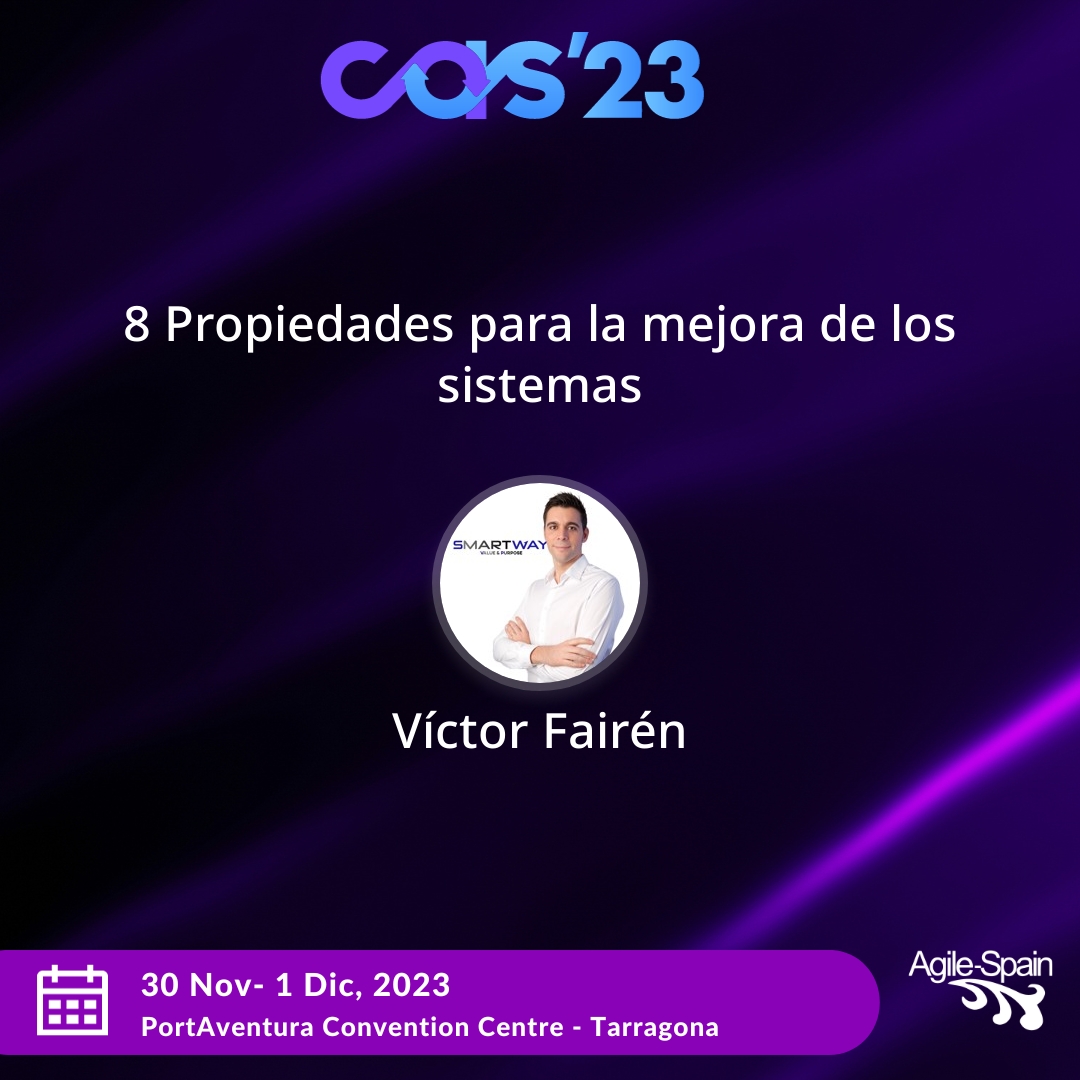Have you ever found yourself stuck at the beginning of a project?
The dreaded blank page.
Many times an idea, a budget or a need activates a whole work machine that involves several people or even the entire organization.
Here you have the responsibility to take the first steps, determine from scratch objectives, scope, metrics, capabilities, skills that will be required and a myriad of information necessary to ensure the success of the project.
Do you have doubts about how to start?
Many people opt for a comprehensive set of requirements and considerations, as well as a work plan and key milestones.
To create such a detailed document, where the role that each person will play throughout the project is clear, requires a significant investment in time, which can often cause delays in the start of the project and can result in it being outdated as soon as it begins to be executed.
The tool I present to you in this article can be a great way to set up everything you need, and only what you need, to get rolling as soon as possible. The Project Brief. Are you up for it?
Guide to Writing a Project Brief
When you are involved in a project, or simply believe that this project may affect a certain line of work, and you need to obtain information about it, you often start an adventure, where you may be faced with numerous detailed pages, lack of information, constant search for people with information and other expertise that, in some cases, may even make you give up. Here you think, if no one has put me in context, maybe it doesn’t affect me, although I would swear it does.
But what if everyone could understand in less than 10 or 15 minutes what your project is about? The above alone sounds desirable, and if we dig a little deeper:
- Being clear and concise always helps more than having to give a thousand explanations, in a world where there is no time to spare… time! Explain clearly the purpose of the project, and how it will help the company achieve its strategic objectives.
- Understanding the impact, not only on the market but also within the company, at a glance is a fundamental factor in assessing the importance of the project and being able to make key decisions about it.
- Total alignment, not only of the project participants, but also of the organization’s participants and even potential clients. Not everyone has to be involved full time, and a clear understanding of the project will make it easier for guest artists to perform on a timely basis.
- Do you feel that during the projects there is a lot of talk about unimportant topics and this makes you lose interest? If the purpose of the project and the expected results are clear, it greatly facilitates smooth communication among all stakeholders, who will not hesitate to join the conversation instead of being in the background until the end. It provides transcendent dialogues for the achievement of objectives without getting lost in less important details.
- The least desirable risks, according to the famous corollary to Murphy’s Law (“Anything that can go wrong, will go wrong at the worst possible time”), are usually well hidden, and most likely someone would have raised them if they were aware of the scope of the project. Don’t miss the opportunity, make yourself easily understood and avoid unnecessary risks.
- By understanding the hypothesis and its validation metrics, anyone will be able, in early stages, to assess whether this project will be a total success, or slow it down to invest the budget in another way.
Let’s not get lost in the details and navigate through this exciting tool.
Creating an Effective Agile Project Brief
But wait, Agile? What is the difference? While the objective is similar, the world in which project management is handled is in constant change of context. And those changes bring with them different alternatives in the development of a project, and may even bring a change of approach! If there are changes, why not pick them up periodically so that no one is left behind, or out of date?

Not only that, in an Agile Project Brief, the interesting thing is not what will be done and what is the execution plan, but to focus on explaining very well the purpose of the project, what objectives it pursues, what hypothesis it validates and with what metrics we are going to check it.
Key Elements of an Agile Project Brief
I start my project, now what? When facing the drafting of a Project Brief, there are certain considerations to be taken into account, and that in one way or another must appear:
- Such a document must have the context well described. That is, the clear need and how the project intends to meet it, or the competitive advantage expected to be achieved with the execution of the project.
- To cover this purpose described above, the objectives of the project must be clearly stated, and how they are aligned with the organizational strategy, so that it is clearly understood how this project will contribute to the goals pursued by the organization.
- How will we know if these objectives are achieved? It is essential to define key metrics that tell us at all times whether the project is contributing to the objectives. It will be the way we have to validate our value hypothesis. Later we will discuss project management practices and how these metrics will help us to detect the success of a project in its early stages.
- Which team will lead the project? Identify the people involved from different departments, key sponsors, customer representatives and other stakeholders who will be actively involved. Let’s not limit ourselves to appointing a project manager and a department, as this will limit us during the evolution of the project.
- Establish limits by defining the scope, it is not a matter of defining all the requirements, but of making clear what we contemplate, and what can be more difficult and at the same time more clarifying, what we do NOT value doing in this project. Establish clear boundaries.
- In most occasions a detailed project plan with dates is included, which requires a detailed in-depth analysis, and would be more in line with a Project Plan than a Project Brief. What is important is to have a roadmap, with the most important deliverables of the project and estimated validation dates, to align the entire organization and manage possible dependencies with other projects. This will also help to establish priorities and offer a global vision… without investing too much time!
Applying Agile in Project Development
We already have the Project Brief in our network folder shared with everyone, now what? The most interesting part begins, the execution of the project! And this Agile thing is not just in the name.

How Agile Transforms Project Planning and Execution
As previously mentioned, some of the aspects of the Project Brief are oriented to how we will measure the success of the project or, on the contrary, to stop it before investing too much money in something that is not going to work. It is not only necessary to have a document that is easy to understand if it is not accompanied by a way of acting.
An Agile Project Brief is a simple, yet not obvious to write, document that allows you to start the project quickly without missing the market opportunity. On the other hand, if the project is also defined by deliverables of value that are released as it progresses, this will not allow us to evaluate the impact through metrics, and thus quickly detect whether we are approaching the objectives or whether we need to recalculate. As you might guess, an Agile Project Brief is a living document that will need to be kept up to date so that no one is left behind and alignment is not lost.
Agile Development In Brief: Process and Practices
Like any Agile process, this one is focused on inspection and adaptation. In agile project management, OODA cycles are highly recommended:
- Observe: Gather relevant information from the environment and identify trends or risks.
- Orientation: Analyze previous information and understand the current situation.
- Decide: Evaluate the available options and select the best strategy to address the situation.
- Act: Implement the selected strategy and re-observe the environment to understand how changes are affecting it.
It is an iterative cycle that allows us to evaluate the impact in each situation. Any model based on Deming’s PDCA (Plan-Do-Check-Act) cycle could apply here. Frameworks such as Scrum or Kanban practices favor this type of improvement cycles. To learn more about OODA cycles you can check this link.
To accompany this strategy, and to obtain successful project results as early as possible, the project can be decomposed using the WBS technique, as described in the PMBok, dividing the project into different scopes, and within each of the scopes into user deliverables. This technique is highly recommended to be combined with prioritization processes (WSJF, MoSCoW, Impact Mapping, Kano…) and roadmapping. The latter is included in the Agile Project Brief to understand project timelines. One technique we recommend is User Story Mapping, as it combines the decomposition of the project with its Roadmap.
Finally, one of the sections of the Project Brief is the people involved, in many cases from different departments. It is very important that these people are in constant communication and act as a multidisciplinary team, with their own processes.
Agile Project Brief Tools and Templates
The beauty of Agile lies in its flexibility, and that extends to the tools and templates you use to document and manage your project.

Selecting the Right Tool for Your Team
The perfect tool is the one that the team actually uses. It sounds simple, but finding a tool that fits the way your team works, not the other way around, can be just as challenging as successfully completing the project.
What tool does your organization use for project documentation and tracking? How comfortable do teams feel using it? This is a good starting point for selecting the right one.
Here are some of the ones we use: Miro, Canva, JIRA, or the Office suite itself (Word, Power Point…), using it in such a way that the information is accessible to all interested parties, for example through Microsoft Teams’ own Sharepoint.
Customizing Project Brief Templates for Specific Needs
There is no one size fits all. The key is to adapt and customize these templates to fit the specific needs of each context. Feel free to modify or add sections. The important thing is not to lose the essence and the objective.
Think of it as choosing the perfect suit: formal enough to be taken seriously, and comfortable enough to run a marathon.
Actual example of a CRM implementation project
If you still have doubts and want to see it in practice, we adapt a real example of a major project below.
Purpose:
The company has experienced significant growth in its customer base in recent years, which has generated the need to improve customer relationship management in order to maintain service quality and customer satisfaction. Currently, the company lacks a centralized system for managing customer information, which makes it difficult to personalize service and identify additional sales opportunities. The Customer Management System (CRM) implementation project aims to address this need by providing a comprehensive platform for the efficient management of customer interactions and traceability.
Objectives and metrics:
- Enable the company to effectively manage customer information.
- 20% increase in the accuracy of customer information recorded in the CRM system compared to previous systems.
- 30% reduction in the time spent by the customer service team searching for customer information, thanks to improved accessibility.
- 15% increase in response rate to customer inquiries due to improved ability to quickly access relevant customer information.
- Improve the quality of customer service by personalizing interactions and proactively following up on customer needs and concerns.
- 25% increase in the average customer satisfaction rating, based on post-interaction surveys that evaluate the perceived personalization and relevance of interactions.
- 20% reduction in the average time to resolve customer issues, thanks to the customer service team’s improved ability to anticipate and proactively address customer needs and concerns.
- 10% increase in customer retention, as measured by the customer retention rate compared to the same period of the previous year.
- Facilitate the sales process by identifying cross-selling and upselling opportunities based on customer data analysis.
- 15% increase in the average value of customer transactions due to greater efficiency in identifying and taking advantage of cross-selling and upselling opportunities.
- 20% increase in the conversion rate of identified cross-selling and upselling opportunities, measured by the percentage of opportunities that convert into additional sales.
- 10% reduction in online shopping cart abandonment rate through personalized product recommendations based on customer data analysis.
Scope of the project:
The project will include:
- Customization and implementation of the selected solution.
- Migration of existing customer data to the new system.
- Training of personnel in the use of the CRM system.
The project will not include:
- Development of customized functionalities not related to customer management.
- Integration with legacy systems not compatible with the selected CRM solution.
Risks: Risk monitoring:
- Inaccurate or Incomplete Data. Action Plan: Evaluate current database error rate. Status: In Progress. End date: 01/04.
- Data Security: Action Plan: Implement encryption controls in each of the modules with sensitive data. Status: To Do. End Date: 07/15.
Roadmap and work team: A good practice for the roadmap is to break down the project into deliverables, using the WBS tool described in previous sections. This will allow implementing the solution iteratively and evaluating results. For the work team, the members of each of the departments that will be part of the project are described here.
Lessons learned: The iterative and incremental way of working allows to evaluate the work process and find opportunities for improvement. Use a space to collect these improvements and their impact on the team’s work!
In conclusion, creating an effective Agile Project Brief is both an art and a science. It requires clarity and adaptability to navigate the often turbulent waters of project management. Follow these guidelines, and you’ll be well on your way to creating a document that not only guides your team to success, but also demonstrates that the journey, though fraught with uncertainty, can be an exciting and rewarding adventure.



